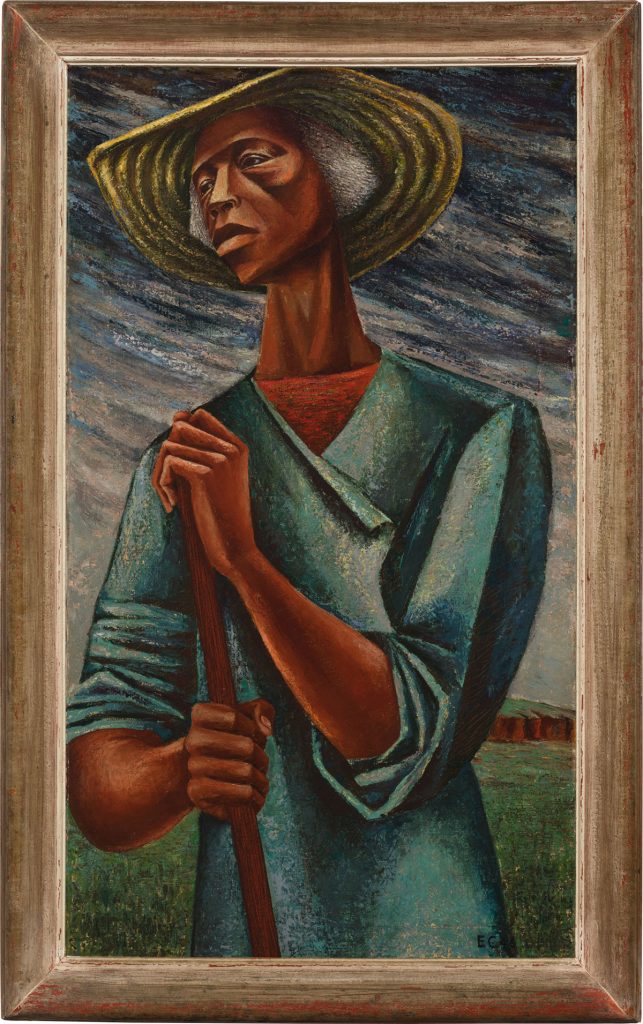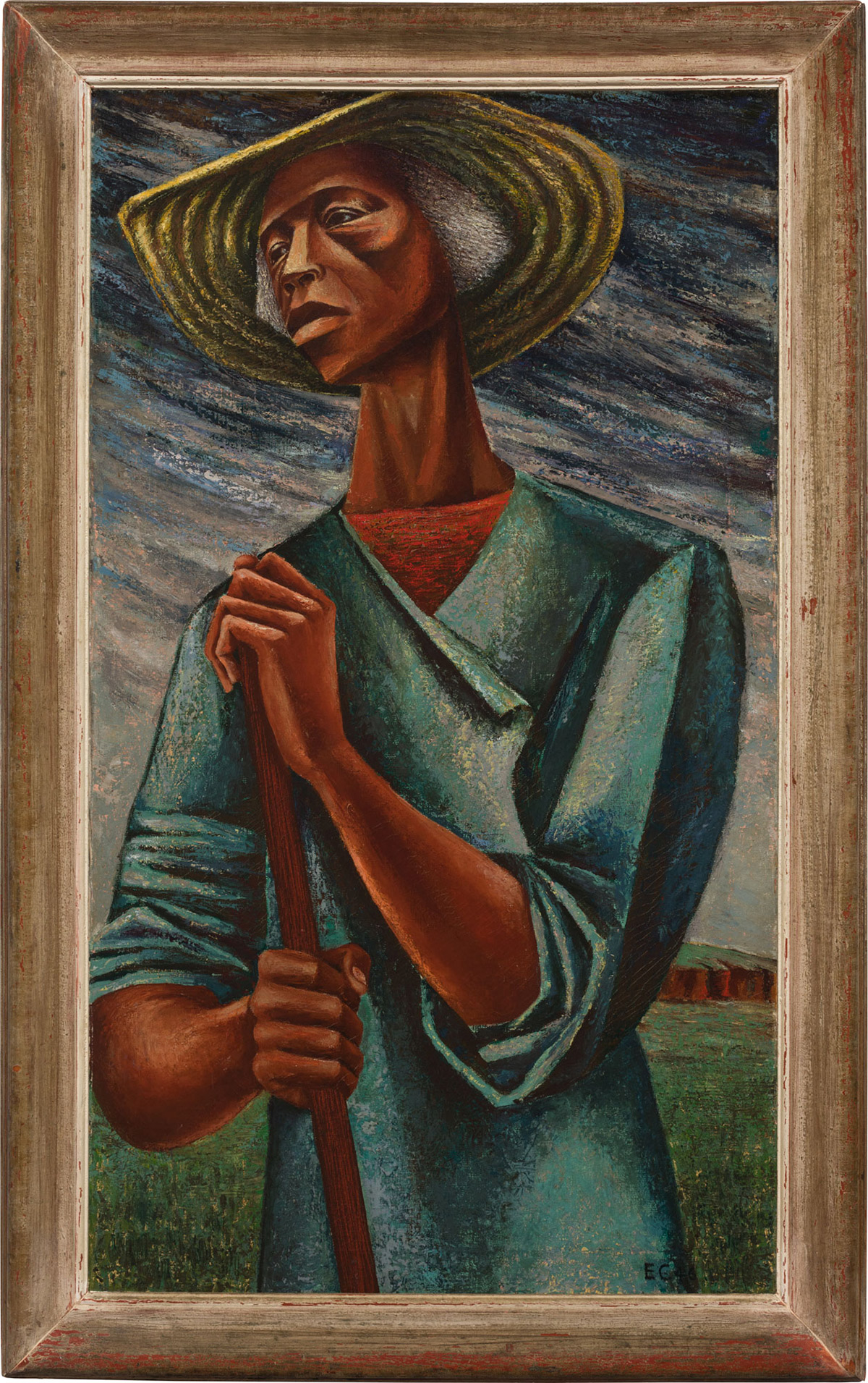
The Revolutionary Art and Life of Elizabeth Catlett

**Elizabeth Catlett: A Black Revolutionary and Artist of Immense Influence**
Elizabeth Catlett, an influential African American and Mexican artist, stands as a powerful figure in the 20th century’s artistic and political landscape. A sculptor and printmaker, Catlett’s work spans over five decades, addressing issues of Black womanhood, labor, political struggle, and the cultural intersections between the U.S. and Mexico.
Her dynamic career is being extensively showcased in the traveling exhibition *Elizabeth Catlett: A Black Revolutionary and All That It Implies*, which highlights over 50 years of her artwork and activism. The exhibition is now featured at the Brooklyn Museum, after previously captivating audiences at prestigious institutions like the National Gallery of Art and Chicago’s Art Institute. Curated by Dalila Scruggs, Catherine Morris, and Rashieda Witter, this exhibit contextualizes Catlett’s life as not only deeply influential in the art world but also as intertwined with significant political movements.
### Early Life and Influences: From the U.S. to Mexico
Born in Washington, D.C. in 1915, Catlett navigated the complex terrain of being a Black, female artist during the eventually shifting, but still hostile, mid-20th century America. Her artistry was born from a combination of personal experiences, political beliefs, and formal education—she pursued an art degree at Howard University and the University of Iowa, under painter Grant Wood.
In 1947, after being politically disillusioned by the racial tensions in the U.S., Catlett moved to Mexico where she settled permanently, finding in the country’s leftist climate a fertile ground for creative and political resonance. Here, she joined the **Taller de Gráfica Popular (TGP)**, a radical Mexican printmaking workshop that distributed art in line with anti-imperialist, socialist, and communist ideals. At TGP, Catlett’s vision evolved, incorporating Mexican revolutionary fervor and melding them with her own African American experience to create a transnational Black feminist perspective unique to Catlett’s oeuvre.
### The Negro Woman Series: Chronicling Black Womanhood
One of Catlett’s most well-known works is her series *The Negro Woman*, later renamed *The Black Woman*. This series of 15 linoleum prints, created in 1946-1947, is a keystone of the current exhibition. The prints offer a poignant narrative of the diverse roles occupied by Black women in both the U.S. and abroad. They show Black women caring for children, working in agriculture, organizing politically, and making cultural contributions through music and education.
The series centers on Black women’s experiences, illustrating both their beauty and resilience, and confronting pressing societal issues such as labor oppression and racial inequality. The series is both a celebration of Black endurance and a critique of the forces that sought to subjugate the community. One famous image from this series, “Sharecropper” (1952), starkly portrays the economic disenfranchisement of African American farmers, while grounding the character of a Black woman in symbolism of strength amidst systemized exploitation. It captures both the quotidian labor of these figures and their quiet, yet enduring, resistance.
### Sculpture: Combining African and Mesoamerican Forms
While deeply connected to printmaking, Catlett’s sculptures also hold monumental significance. In Mexico, Catlett explored terracotta sculpting inspired by the claywork of Indigenous Mesoamerican traditions. Her sculptures often addressed themes of resistance and solidarity, as seen in works such as “Tired” (1946), which depicts a working-class woman resting, juxtaposed with prints showcasing the toils of labor performed by Black women.
One of Catlett’s best-known sculptures, “Black Unity” (1969), showcases the raised fist, a potent symbol of Black power and resilience. This cedar-carved fist stands as both a political symbol and a testament to collective strength. Other works, like “Homage to My Young Black Sisters,” free-flowingly blend African influences with Mesoamerican aesthetics, a testament to her bi-national identity and her commitment to a Pan-African solidarity.
### A Political Vision Rooted in Feminism and Black Liberation
The late 20th century saw Catlett deeply immersed in the globalized Black liberation and feminist movements. Her works from the 1960s onward reflect the radical politics of the era, participating in conversations around civil rights, feminism, and the rising tide of Black political consciousness.
Key pieces like “Angela Libre” (1972) represent figures of revolutionary Black women, such as Angela Davis. Davis’s activism deeply inspired Catlett’s artwork, which disseminated powerful depictions of Davis as a symbol of Black women’s resistance against racialized incarceration. The striking piece, rendered in bold colors typical of the Black Arts Movement, emphasizes Davis’s struggle against oppression while celebrating the revolutionary potential of Black femininity.
Alongside Davis’s imagery, Catlett depicted other figures of Black resistance